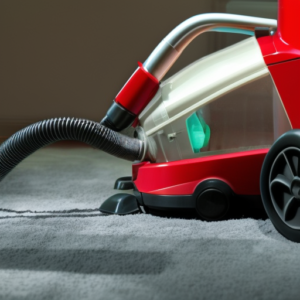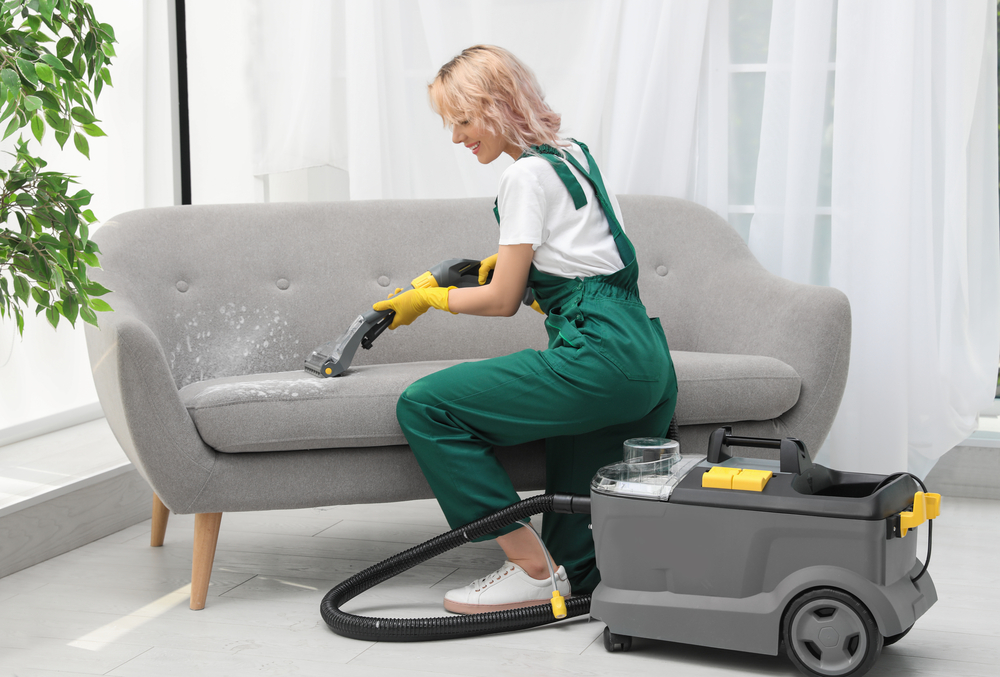Last Updated on February 24, 2023
Like a shop vacuum cleaner, wet and dry vacuum cleaners are great for cleaning up liquid spills and other messes. Some models can also be used as a sump in heavy-duty jobs to move water from one location to another, which is useful in case of minor flooding in a basement or bathroom or for certain types of outdoor cleaning.
Using a wet and dry vacuum is extremely simple to utilise, just like your standard normal vacuum cleaner. This article will cover the basics of how to use a wet and dry vacuum cleaner and how to clean and store your wet dry vac away when not in use.
Using a Wet and Dry Vacuum Cleaner in Six Simple Steps
Step 1: Check the Filter
First, check and know what type of filter your specific wet and dry vacuum cleaner model came with. There are various types, but the filter will need to be removed before you use the vacuum cleaner to pick up wet messes in most vacuums. You will need to change filters periodically, so be sure you know which filters your vacuum has so you can purchase the right filter as a replacement.
Unlatch the top lid or panel of your wet and dry vacuum cleaner and look inside. You will see the filter directly under the top panel in most cases.
Foam or Paper Filters
The filter in your wet dry vacuum cleaner may be either foam or paper. The purpose of the filters is to collect dust particles and prevent them from collecting on the motor and damaging your vacuum cleaner.
If your wet/dry vacuum cleaner has a paper filter, you will most likely need to remove it before vacuuming up water or other liquid. If it has a foam filter, it may be left in while vacuuming liquid spills, but be sure to check your wet dry vac user manual to be sure. You can use a wet vacuum with the filter still installed in many cases, but each tool is different.
Step 2: Check the Bag Compartment

Once you’ve determined which filters your particular wet/dry vacuum utilises, it’s time to figure out if it uses a collection bag or a canister. Most wet and dry vacuum cleaners will have a one or two- bucket system to collect liquid waste and dry debris and not use a bag. However, a few models will require a dust bag installed inside and removed when full of dust or wet.
Collection Bag or Canister
If your wet dry vac uses a collection bag, this is normally only useful when vacuuming up dry debris, such as cleaning carpets inside your house. When vacuuming liquids or cleaning an outdoor area, you will most likely have to remove the bag and let the liquid collect in the canister, bucket or tub. This allows for easy emptying of the liquids later and preserves your bag for use with dry vacuuming.
Step 3: Check the Hose and Power Cords
Before vacuuming, ensure the hose is attached correctly, and you have selected the appropriate attachment. Some are made specifically for cleaning up liquids, such as ones with a squeegee and those with a filtered cover to prevent leaves and other large debris from being sucked up with the liquid.
Additionally, other attachments may include a flat nozzle for removing dust and dirt from corners and an attachment suited for collecting pet hair and dirt from furniture, carpet and car seats. Your vacuum may include several different attachments already, but you can always find the right attachment for your specific wet and dry vacuum model online and at various retailers.
Step 4: Plug in Your Vacuum

After the hose and your chosen attachment are ready to go, it’s time to plug in your vacuum. The power cord may be stored in a lower compartment on the vacuum or coiled up on the exterior. Locate the power cord and unwind it, then plug it into a wall outlet away from any liquids you may need to clean up.
Turn your vacuum cleaner on and make sure it starts to suck. Slowly move in a back and forth motion over the liquid or dry debris you need to clean up. If your vacuum hose becomes clogged, turn off the vacuum and dislodge the clog before turning it back on again. If sucking power seems reduced, you may need to change the vacuum bag or empty the canister before you continue cleaning the carpet or targeting stains.
Step 5: Empty and Store Your Vacuum
After you have cleaned up the mess, it’s time to put your vacuum away. Unplug the power cord from the wall outlet and coil it back up on the unit’s exterior or into the cord compartment on the bottom.
Remove the tool you were using and place it back on the attachment holder, typically built into your vacuum. Place the hose on its attached holder as well. These are usually found on the exterior of the canister or tub itself.
Before keeping the vacuum cleaner in storage, make sure to empty the canister, tub, and bag. If you need to bring out the vacuum later to suck up a spill or do a quick cleaning, you don’t want to mess with a full collection canister or debris bag beforehand.
If you cleaned up any liquid, consider rinsing the collection canister in warm water before storing the vacuum away. Some remaining liquids, such as beverages or stagnant water, can mould or mildew over time, leaving an unpleasant smell in your vacuum’s canister.
Using a Vacuum Cleaner Has Never Been This Easy!
And that’s it for how to use a wet and dry vacuum cleaner. Using one of these appliances is just the same as using a standard household vacuum. While you may have to remove the filter or collection bag when cleaning up liquid messes, some models can be used without extra preparation for wet or dry messes.
A wet and dry vacuum cleaner can make it easier to keep your home, workshop, or workplace much cleaner. It can also help make outdoor cleaning easier, especially if you have a model that can blow air and be used as a leaf blower.
Being able to clean up both wet and dry spills quickly and other debris can also help prevent permanent damage and stains to the carpet and furniture in your house.
Do you find this article very helpful? We would like to hear your thoughts about your ideas on using a wet and dry vacuum cleaner. Please share your ideas and comments by typing them below.
Rebekah is a writer who loves to explore new products and find hacks that make life easier. She has a knack for all things home improvement, health and fitness. So you’ll often find her on Pinterest or browsing Houzz for ideas.
She’s always looking for the next thing to fix up around the house or what gadget might be just right for her lifestyle. Rebekah enjoys exploring new recipes, taking care of her family, and making sure she stays healthy with regular workouts at the gym.

